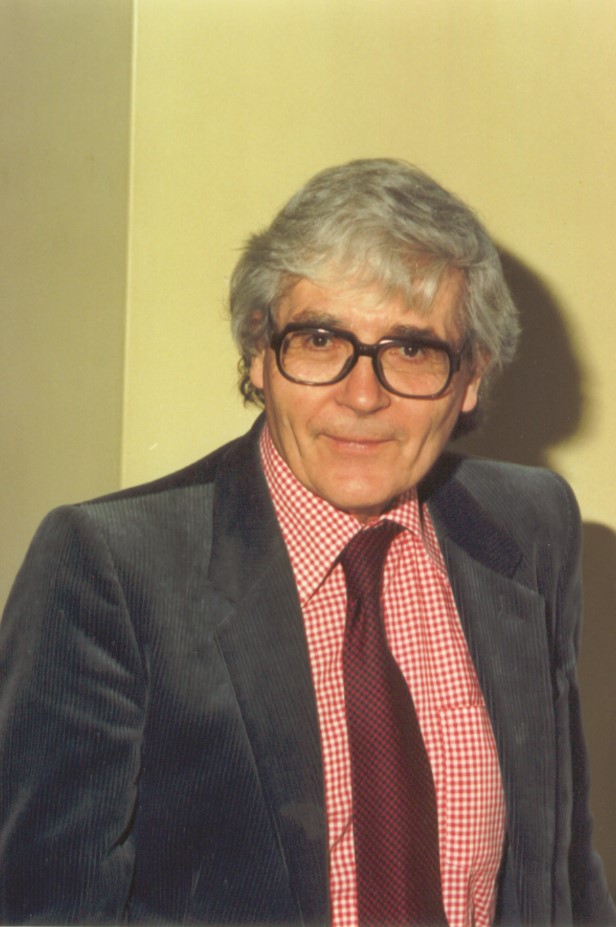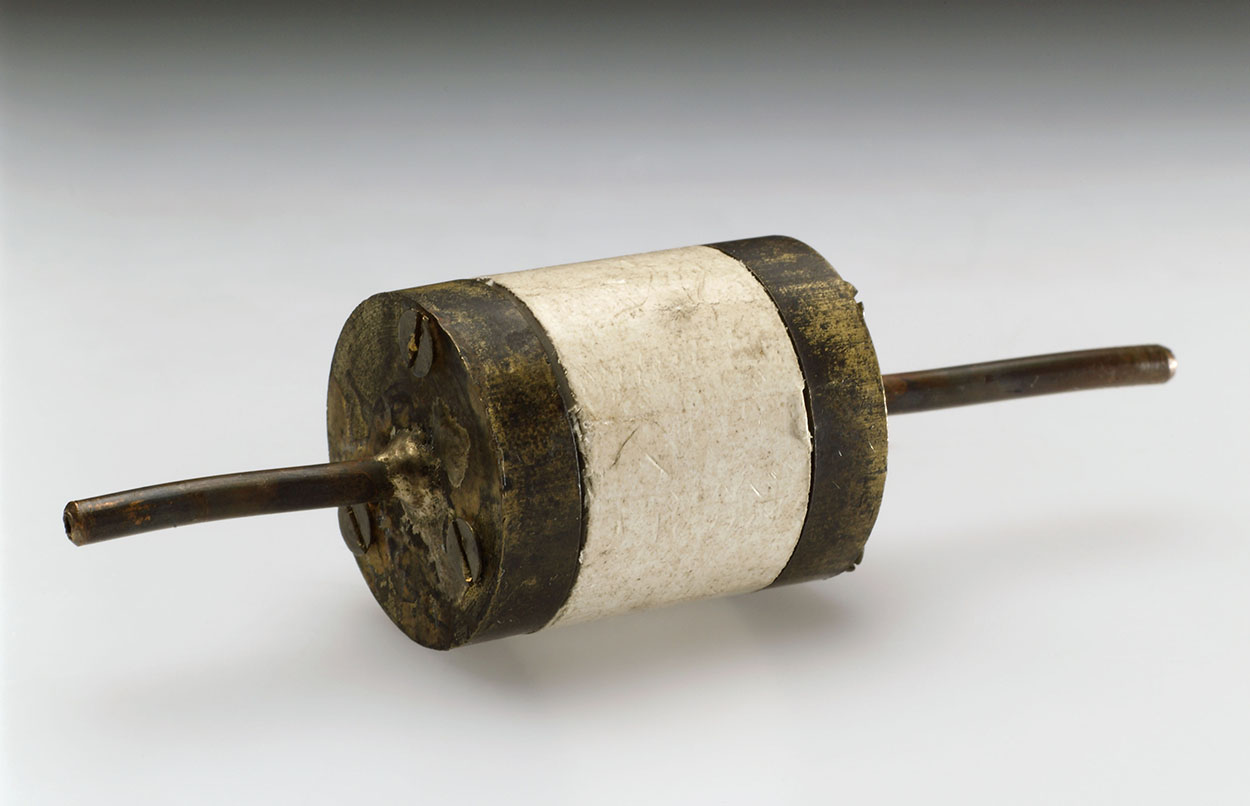A tribute to James Lovelock
James Lovelock, who died in July in 2022 on his 103rd birthday, is known to the public as the originator of the Gaia hypothesis: the idea that the Earth and the life that inhabits it forms a single, self-regulating system. He was, however, also a long-time friend of the Marine Biological Association, serving as its President from 1986 to 1990. During this period, he helped to guide the MBA through one of its most difficult and turbulent times, as the Natural Environment Research Council (NERC) sought to substantially reduce its support for the MBA. Article by Andrew Watson and Mike Whitfield.
James Lovelock in 1986. © MBA.
James Ephraim Lovelock, (‘Jim’ to his friends and colleagues) was born on 26 July 1919—he believed he was conceived during the celebration of the Armistice in November 1918. Brought up as a Quaker in Brixton, he studied chemistry in the evenings at Birkbeck College in London, before moving to a full-time Chemistry degree at the University of Manchester. During the Second World War he registered as a conscientious objector, and began work at the National Institute of Medical Research (NIMR), where he stayed until the mid-1950s. He would sometimes reminisce with approval about the research culture of the NIMR, where the researchers were well-paid and highly valued, but where each was expected to individually and creatively pursue their science. He thought that the MBA of the 1970s still resembled that model in many aspects, in contrast to the universities, which he considered were no longer suitable places for research.
During his time at the NIMR, Lovelock invented the electron capture detector (ECD see Fig. 2). This was an almost magical device that could detect some compounds especially halogenated organics, with exquisite sensitivity. With astonishing regularity, these same compounds would prove to be critically important in biology or the environment—as pesticides, explosives, poisons, pollutants, or tracers. In the 1960s, the ECD was used to document the global spread of pesticides such as DDT—work which laid the groundwork for Rachel Carson’s book Silent Spring and the birth of the modern environmental movement. In the 1970s, Jim used his invention to demonstrate the global distribution of the chlorofluorocarbons in the atmosphere. These compounds were soon identified as depleting stratospheric ozone, giving rise to the biggest global pollution story of that decade.

Figure 2. The electron capture detector invented by James Lovelock: an almost magical device that could detect certain compounds with exquisite sensitivity. Science Museum London / Science and Society Picture Library, CC BY-SA 2.0 , via Wikimedia Commons
But Jim is best known for Gaia, the concept that the whole Earth, both the environment and the life at its surface, can be regarded as a living entity with its own whole-system properties. He came to this idea while working with NASA on the design of experiments to detect life on Mars. He realized that the atmospheres of Mars and Earth were profoundly different: life on Earth maintained the atmosphere as an unstable mixture, with its oxygen and nitrogen that in time should react with one another to form nitrate. Such an atmosphere, far from thermodynamic equilibrium, betrayed the presence of an active biology at its surface. By contrast, the Martian atmosphere was mostly carbon dioxide, and was much closer to thermodynamic equilibrium, as might be expected of a dead planet.
"The Earth is more than just a home,
it’s a living system and we are part of it"
Jim’s involvement with the MBA began when Mike, who in the 1970s led the chemistry group at the MBA, wrote to him about Gaia’s possible application to the composition of the oceans. This correspondence, and the fact that Lovelock lived in the West Country quite close to Plymouth, gave rise to a productive collaboration with MBA scientists, though in areas of science some distance from the mainstream of marine biology. There was, for example, a paper in Nature by Lovelock and Whitfield entitled ‘Lifespan of the Biosphere’, predicting a relatively short future for life on Earth compared to its past tenure of 4 billion years. Later, Andrew joined the MBA and while there, wrote with Jim a paper called ‘The Parable of Daisyworld’. This analysed the behaviour of a model world that illustrated the effects of intense feedback between life and the global environment, of the kind we believed was important for Gaia’s properties. This paper—about a deliberately whimsical fantasy planet populated only by daisies—became an important part of the debate about Gaia, giving rise to dozens more publications about the properties of this imaginary world, about half of them written by supporters, and the other half by detractors, of Jim’s ideas.
Jim was a member of the MBA’s Council from 1981, and became its President in 1986. It was an unusual role for him, since he never enjoyed, and mostly managed to avoid, the for mal and administrative side of science. In his autobiography Homage to Gaia, he writes that he was told at the time that the presidency would be ‘ … almost a sinecure, and all that I needed to do was to chair the council meetings four times a year and sign the occasional document’. However, it was not to be that way, because the House of Lords Science and Technology Committee had recommended that the MBA should merge with the Institute of Marine Environmental Research (IMER). MBA Council was justifiably afraid that the MBA’s independence and its rich history would be swept away in any such merger. Jim, therefore, had to lead the Council in its negotiations with NERC, who provided most of the funding for both laboratories at the time and was determined to implement the merger.
The outcome of those negotiations has formed the backdrop for the subsequent evolution of both the MBA and Plymouth Marine Laboratory (PML). The MBA Council had, as Lovelock remarks in his autobiography, ‘a lousy hand of cards to play’ and had to accept a sometimes painful contraction of the MBA. However, they did succeed in retaining its independence and long-term viability, with a vigorous programme of fellowships paid for by NERC. Crucially, NERC agreed to continue to fund the lease of the Citadel Hill laboratory by the MBA from the Crown Estate, for the benefit of both MBA and PML research.
With James Lovelock’s passing, science has lost one of the most original thinkers of recent times, while those of us who knew him lose an unforgettable friend and teacher. His death deprives the MBA of a distinguished friend and supporter, who contributed to the organization by his efforts as its President to guide it through a difficult time. He also enriched the MBA by the science he did in collaboration with researchers there, which contributed to a broadened interpretation of the MBA’s remit, with marine biology seen as part of a bigger picture: Gaia, the whole Earth system.
• Professor Andrew Watson, FRS
• Professor Mike Whitfield, PhD FRSC
